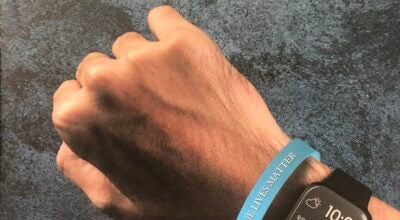Phil Hardy: Oct. 31, 2018
Published 12:27 pm Wednesday, October 31, 2018
The question I get most at this time of year is, “Where have my hummingbirds gone?”
The answer is straightforward: Ruby-throated Hummingbirds are migratory and most have departed their North American homes to countries in Central American for the winter months. There may be some exceptions and a few stragglers have even been known to over-winter here in Georgia. And don’t forget about other species of hummingbirds that come to the southeast United States to spend the winter. The most common species being the Rufous Hummingbird.
This is a perfect opportunity to segue into the second most asked question at this time of year: “When should I take down my hummingbird feeders?”
The response is you don’t have to. Some people are under the misconception that if they leave their sugar-water feeders up they might prevent their hummingbirds from migrating as they should. This is not true. I usually keep at least one sugar-water feeder out in case I have a winter hummingbird. So, what triggers a hummingbird’s natural instinct to migrate?
It is generally thought that the amount of daylight or length of days is the inaudible signal to our tiniest of birds that it is now time to migrate. During the weeks prior to migration Ruby-throated Hummingbirds will add up to 50 percent of their body weight by feeding heavily on flowers, feeders, and insects. This extra body weight will assist them to make the arduous journey. Flying takes a lot of energy and that energy is stored as body fat.
Our Ruby-throated Hummingbirds will stage themselves along the Gulf states and cross the Gulf of Mexico in a 500-mile, nocturnal, nonstop flights. Because of their small size there is no benefit to them in flying in formation for aerodynamic assistance like geese do. They fly alone yet with thousands of other migrating hummingbirds and passerines.
Over the years bird banders have made some significant discoveries. Quite often the same individual Ruby-throated Hummingbird is caught on the exact same day in the exact same location as previous years. Therefore, hummingbirds have great fidelity to their particular migration route. Apparently the first-year birds that were hatched this year receive migration routes and a guidance system that is inherited from their parents. It has even been discovered that young birds will winter where their parents and ancestors have wintered even though they have never seen or visited those wintering grounds before!
Often I have pondered the act of migration and how difficult it is not only for birds but mammals as well. I’m always amazed at this remarkable feat. Take for example a hatch-year Ruby-throated Hummingbird (a bird born this year). After fledging, its mother may spend only a couple of days with her young, then it’s every bird for himself/herself. So how does that young bird, only a couple of months old, know how and when to migrate to Costa Rica or Mexico?
The answer might be found in Job 39 verses 26-27 when God said to Job, “Does the hawk fly by your wisdom, And spread its wings towards the south? Does the eagle mount up at your command, And make its nest on high?”
Clearly God has imparted instructions to all the birds of His creation. Through DNA, birds can accomplish things like migration, learn how and what to feed on, how to bathe, build nests, select a mate, etc.
From the feedback I get, hummingbirds are by far one of the most favored of birds in Southwest Georgia. They will return next spring, bringing smiles to our faces, through the amazing the process of migration, beginning yet again. But don’t dismay; several of my acquaintances have hosted a winter hummingbird. So, you may want to maintain at least one feeder this fall and winter in case you get one of the rarer west coast species. Just remember to keep your feeder clean and change out the sugar water solution as you normally do. If you do attract a winter hummingbird, I’d love to hear about it.
Take time to observe our native birds. And remember, keep your cats indoors.
Phil Hardy, of Americus, is a bird watcher and bird photographer.



